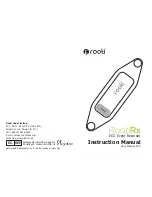
SIGMA LASER STENT AND TUBE CUTTER
990-401
B-7
small hazard
potential for
accidental
exposure
instruments may be
exceeded up to 5
times
IR, and 5 times the
limit for Class 2 in
visible, i.e. 5 mW
and IR, and 5
times the limit
for Class 2 in
visible, i.e. 5
mW
Class 3B Medium power
lasers
Hazardous when
eye is exposed.
Wear Eye
Protection within
NOHA. Usually
no hazard to the
skin. Diffuse
reflections usually
safe
Ocular MPE with
naked eye and
optical instruments
may be exceeded
more than 5 times.
Skin MPE usually
not exceeded.
Hazard area for the
eye (NOHA), no
hazard area for the
skin
500 mW
Class 4 High power
lasers
Hazardous to eye
and skin, also
diffuse reflection
may be hazardous.
Protect Eye and
skin. Fire hazard.
Ocular and skin
MPE exceeded,
diffuse reflections
exceed ocular MPE
Hazard area for the
eye and skin, hazard
area for diffuse
reflections
No limit
**Note for optical instruments: two classes of optical instruments are accounted for: such that increase
hazard of well collimated beam with large diameter, i.e. telescopes and binoculars, and such that
increase hazard of highly divergent beams (such as from fibers or LEDs), i.e. eye loupes and magnifiers.
Generally only one of the group of optical instrument for a given laser product leads to an increase in the
hazard. Therefore, at the discretion of the manufacturer, a specific wording can be added to the warning
label. See sections on optical instruments and warning labels below.
* Chart Courtesy of David Sliney
Note:
The above table discusses the classification scheme and concept of the new (2001) edition of IEC
60825-1 and compares it to the previous scheme in terms of AEL values and definition of the
classes. However, additionally to some changes of the class definitions and classification scheme, also
the measurement requirements for assessing the class, i.e. the aperture diameter and distance, are
somewhat different in the new edition in comparison with the previous version. Therefore, if in above
table it says “unchanged”, this means that the concept, definition and AEL of the class is unchanged, but
it does not mean that a specific laser product, which was classified as for instance Class 4 because the
emission as measured with the previous requirements was slightly above the AEL for Class 3B, might
not be classified as Class 3B following the measurement requirements of the new edition of the
standard.




































